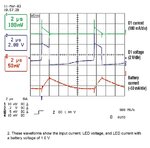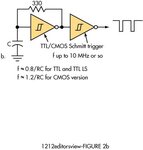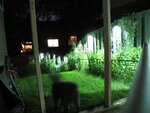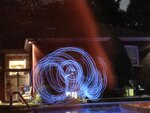Boost Regulator :bsdetector:


:bsdetector: Bi-Colour Latch

PWM analog clock :bsdetector:

:bsdetector: DIY Garden Fence LED Light shades

:bsdetector: Blue Pool LEDs coated in clear epoxy


All diodes have a threshold voltage, Vth which is basically the voltage at very dim illumination, like a silicon diode is 0.6V and may be selected at say 1% of the rated current to measure estimate the dynamic resistance , Rd which we can approximate as a fixed Effective Series Resistance, ESR at rated current.
I usually extrapolate the curve to the zero axis (Vth) and Vf at rated current to measure ESR.
The following is an LG part for UV. The shorter wavelength chemistry has a higher Vth than Blue.
The Vf is always at rated current (not max) which is exponential but a linear regression to extrapolate Vf is useful. where Vf ~ Vth + I*ESR

I computed above Rd vs If from small differential V/I.
The Vf on a high power LED is lower because of the lower ESR. This ESR*Pd product is usually constant and useful to remember. ESR*Pd=1watt-ohm . Thus 0.5Ohm for a 2W LED.
:bsdetector: Bi-Colour Latch
PWM analog clock :bsdetector:
:bsdetector: DIY Garden Fence LED Light shades
:bsdetector: Blue Pool LEDs coated in clear epoxy
All diodes have a threshold voltage, Vth which is basically the voltage at very dim illumination, like a silicon diode is 0.6V and may be selected at say 1% of the rated current to measure estimate the dynamic resistance , Rd which we can approximate as a fixed Effective Series Resistance, ESR at rated current.
I usually extrapolate the curve to the zero axis (Vth) and Vf at rated current to measure ESR.
The following is an LG part for UV. The shorter wavelength chemistry has a higher Vth than Blue.
The Vf is always at rated current (not max) which is exponential but a linear regression to extrapolate Vf is useful. where Vf ~ Vth + I*ESR
I computed above Rd vs If from small differential V/I.
The Vf on a high power LED is lower because of the lower ESR. This ESR*Pd product is usually constant and useful to remember. ESR*Pd=1watt-ohm . Thus 0.5Ohm for a 2W LED.







